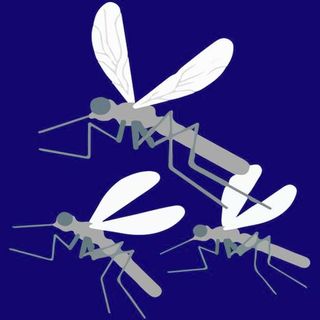
Kids Start Linking Eating Habits to Emotions As Young As Age 4
New research out of the University of Texas at Dallas shows how the roots of emotional eating are laid in childhood, which may have long-term effects on healthy food habits. Psychologist Shayla C. Holub and Cin Cin...

New research out of the University of Texas at Dallas shows how the roots of emotional eating are laid in childhood, which may have long-term effects on healthy food habits.
Psychologist Shayla C. Holub and Cin Cin Tan used clips from Disney’s The Lion King to create happy, sad and neutral emotions in three groups of children aged 4-and-a-half to 9 years old. They then presented the kids with four snacking options. The sad kids gravitated to the unhealthiest option — but so did many of the happy ones.
“The kids watching the saddest video ate the most chocolate,” Holub says. “There was a significant drop in consumption among the ones watching the happy video, but they still consumed more chocolate than the neutral video group. This suggests that children eat in response to both happy and sad emotions, but more for sadness.”
The study’s results also show emotional eating increases with kids’ age, which suggests to Holub that eating your feelings is at least in part a learned behavior.
Article continues below
“This is one of a very few experimental studies on emotional eating in young children,” she said. “What we’re learning is that it’s sometime during the preschool period that children are developing these eating habits. For example, you go to birthday parties and experience positive emotions — everyone has fun and gets candy or cake. And at holidays, it’s all about the food. Children begin to associate food with certain feelings.”
Prior to that age, Holub says, kids have a strong ability to consume the right amount of calories for their energy needs.
“Very young kids are really good at regulating their food intake,” she says. “If you change the energy density of a baby’s formula content, the child adapts his or her food intake in response. If you give preschoolers a snack, they will adjust their meal intake to react appropriately so that they are not too hungry or too full. They know their own body cues.”
Holub argues that it’s in the preschool period that children begin to think not about what their body is telling them, but instead about what their social environment — parents, friends, teachers, media — is telling them. It’s during this time that lessons such as eating all the food on the plate or prohibiting certain types of food are frequently introduced.
“If the portion that is on my plate is what I’m supposed to eat, I’m going to force myself to eat it,” she says, explaining the lessons internalized by preschoolers. “Restrictive feeding practices also seem to be problematic — telling children they can’t have something makes it a preferred food, and when they gain access to it, they immediately eat more of it. That’s another way that children learn to stop listening to their internal cues.”
The latest study builds on earlier work by Holub and Tan, now a researcher at the University of Michigan’s Center for Human Growth and Development, which showed that parents teach food habits like comfort eating, stress eating or celebratory eating both by example and in practice.
“In 2015, we published one of the first studies to find that it’s not only that the behavior is being modeled for a child — seeing a parent turn to food when they’re sad, for example — but that it sometimes also might be that parents feed children in emotion-regulating ways,” Holub says. “Your child gets upset? Here’s a piece of candy. You’re bored? Here’s something to eat.”
Holub emphasizes that while her findings don’t indicate eating habits can’t be modified later, the 3-to-5 years are a crucial time in which some children lose their ability to self-regulate when it comes to eating. She sees this more as an opportunity than a drawback.
“If we can learn how to nurture healthy habits early on, that makes us less likely to have to eliminate negative behaviors later,” she said. “The idea is to set up healthy trajectories and communicate with our children about how to choose healthy options.”
Related


India’s Infant Mortality Rate Is among World’s Worst, Says UNICEF Report
